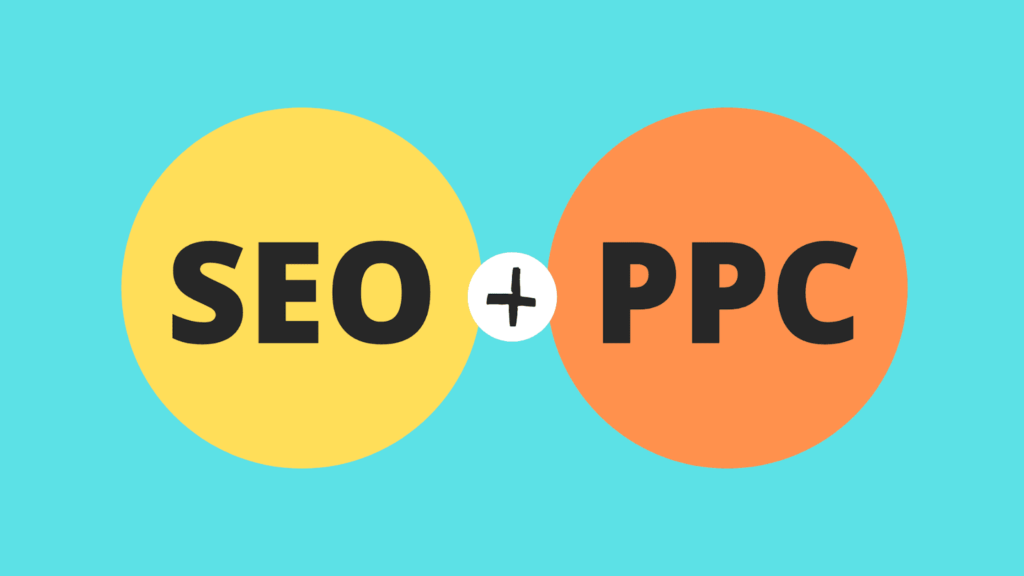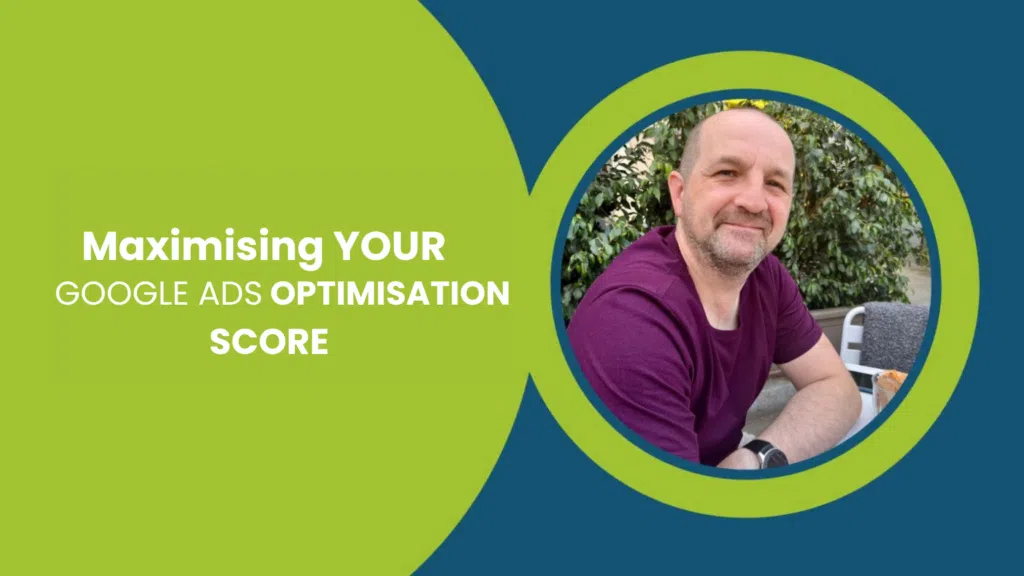When it comes to online stores, pay per click (PPC) advertising and search engine optimisation (SEO) are arguably two sides of the same coin. They both work towards the eCommerce business goals of generating more sales.
But, all too often these powerful tools become disjointed rather than working together. This guide will help you to understand how you can align your SEO and PPC eCommerce efforts for better results.
SEO and PPC integration
What is PPC and SEO?
You may be wondering what is the difference between SEO and PPC? To align your efforts, it’s crucial to understand what each vertical can do to aid your business.
What is eCommerce SEO?
SEO is the process of improving the quality and quantity of website traffic from search engines. It targets unpaid organic traffic only. While there may be expenses for online businesses using an eCommerce SEO agency, it costs nothing to rank your online store organically in the search engine results, your only investment needs to be time and the understanding of eCommerce SEO techniques.
SEO is very cost-effective, but it is a slower process that requires continual maintenance.
What is PPC in eCommerce?
PPC advertising for eCommerce is an online advertising strategy that drives traffic to eCommerce stores and their products. The advertiser pays a publisher such as Google each time the ad is clicked.
Pay per click is commonly associated with the paid search advertising results that appear on search engines such as Google. However, PPC ads can also display on social media networks, websites and other online advertising outlets. Did you know Tillison Consulting are experts in Google Ads Management?
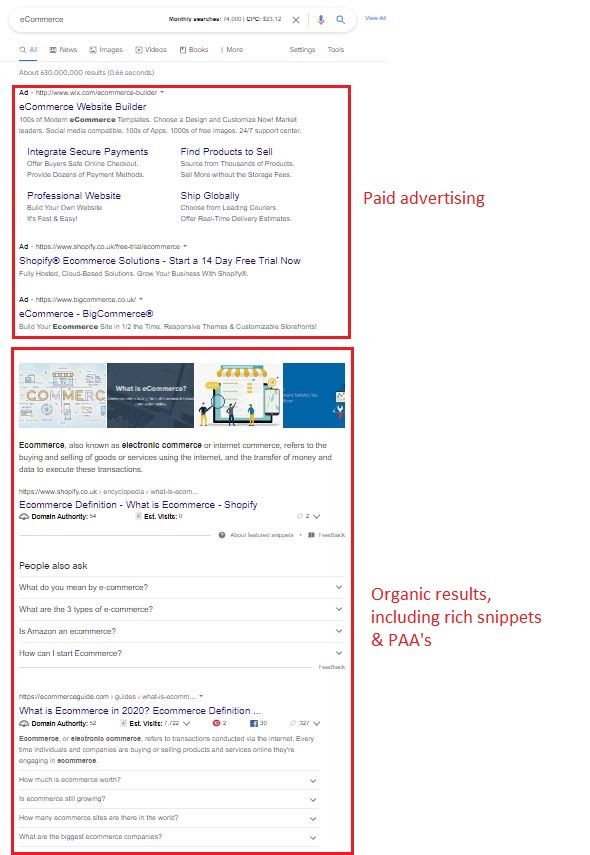
PPC is very reactive and works well at generating sales because it targets ready-to-buy shoppers. However, it can be costly.
The key takeaway is:
- SEO = slower and cost-effective
- PPC = faster and higher costs
How do PPC and SEO work together?
A crucial reason why SEO and PPC integration works so well is that they are both heavily dependent on keyword optimisation to surface for related searches.
Google search and Google shopping campaigns are led by keywords. They are used for bidding on search terms (queries), as well as playing a big part in optimisation for your ad rank. SEO landing pages are optimised for the best and most relevant keywords to capture organic traffic.
Both SEO and PPC use high intent keywords to capture traffic that is most likely to convert. The similarities in both make SEO and PPC integration very achievable.
It is worth noting that only Google search and shopping ads are keyword driven. Display ads, remarketing and other types of Google advertising are led by other factors.
As we’ve mentioned already, PPC campaigns can generate immediate results for online stores. Working alongside SEO, paid advertisers can utilise profitable keywords, with the aim of optimising landing pages. This will enhance visibility and traffic for immediate PPC results, as well as for longer-term SEO gains.
PPC & SEO eCommerce tips
1. Combine your shopping strategies
Free listings have now returned to Google Shopping – giving even more opportunities to align SEO and PPC. Google Shopping listings are populated through the Google Merchant Centre. So, ensure that your organic and paid activities are integrated for the best chance of making sales.
2. Ensure visual consistency
With Google taking more steps towards giving users better search engine and website experiences, visual assets have never been so important. Align your images, videos and other creative assets for consistency across all channels.
3. Play to each strength
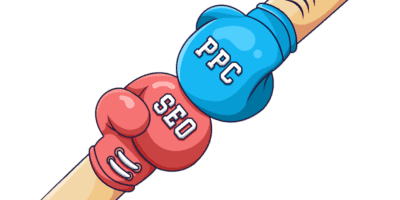
While SEO and PPC eCommerce integration is crucial to achieving awesome results, this doesn’t mean that everything needs to be exactly the same.
You want each vertical to use its strengths. SEO can fluctuate significantly from keyword to keyword. Likewise, the cost per click can vary between paid advertising keywords, and your budget can only extend so far. So, use each digital marketing tool to your advantage.
Target high-value queries where paid listings dominate the results, and look for SEO opportunities to rank for queries that will attract high click-through rates. Use each channel to its strengths, compensating for the other when you lack coverage.
4. Trial new content with PPC
A/B testing is important for eCommerce stores looking to up their click-through rates (CTR) and conversions. As SEO plays a much longer game, PPC is often a great way to drive traffic to test pages to gain an instant bulk of data.
Test out new variations of brand messaging, different creative assets and multiple calls to action with A/B testing to see what works best for the audience. You can then use your data to inform SEO efforts and further your PPC gains. If you’re new to the idea of A/B testing, contact a digital marketing agency offering conversion rate optimisation services (CRO). They’ll be able to give you a head start!
5. Target the whole purchase funnel
The reasons why a user is on a search engine are greater than ever. Search engines like Google are making it easier for online shoppers to plan ideas and gain inspiration far in advance of making the purchase.
Make the most of a long consideration phase by providing a range of content targeted at different stages of the purchase funnel to capture new potential customers.
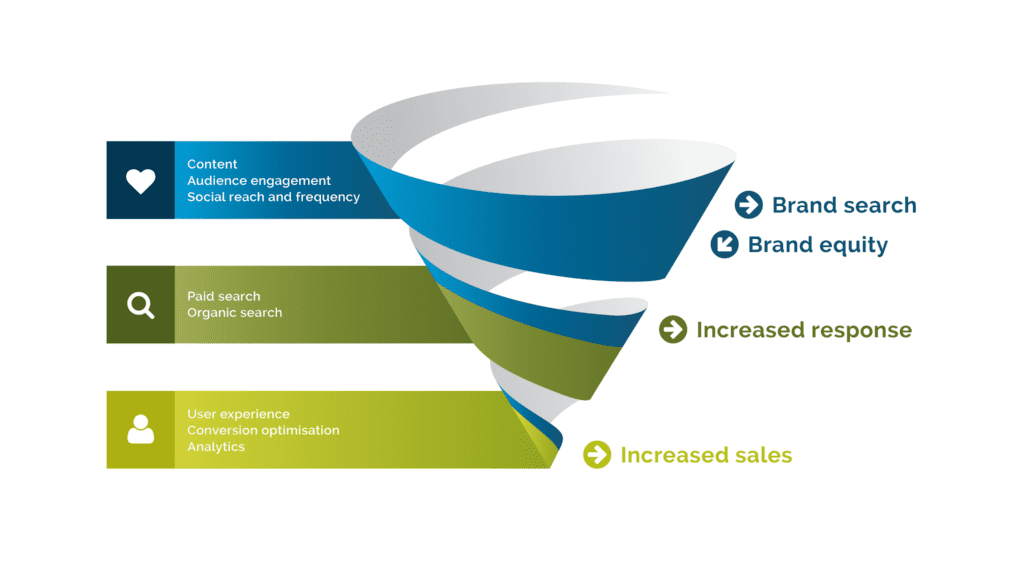
This could be anything from ‘how-to’ guides and tips for users wanting inspiration, right through to specific product answers for a customer problem. How you balance out your SEO and PPC efforts is up to you, but try to cover all bases.
6. Integrate Google and Amazon

The eCommerce customer journey is highly fragmented. From the desire for a product to the decision-making stage, a user may encounter multiple different eCommerce providers in their search journey. This includes Amazon.
With many Amazon categories and product rankings in paid search results and at the top of the organic rankings, it is a good idea to consider this as a selling avenue.
Plan your budget across all retailers, search engines and other selling channels and be ready to adapt quickly as you measure the returns on each channel.
Don’t forget to keep your product information, creative assets and brand messaging consistent across all channels for a better conversion rate and customer experience.
7. Utilise ad extensions and schema
Ad extensions are additional pieces of information that expand your advertisement to make it more useful to users. Ad extensions might include telephone numbers, additional links from your website, seller reviews and even pricing. Ad extensions make your advert stand out from your competitors and encourage more clicks.

Similarly, structured data (schema mark-up) is the organic version of ad extensions. Schema is a piece of HTML code that helps search engines to better understand what the web page is about. Structured data may be used by search engines in rich snippets and to visually improve the user experience. Structured data can be in the form of FAQ’s, star ratings, prices and even images.
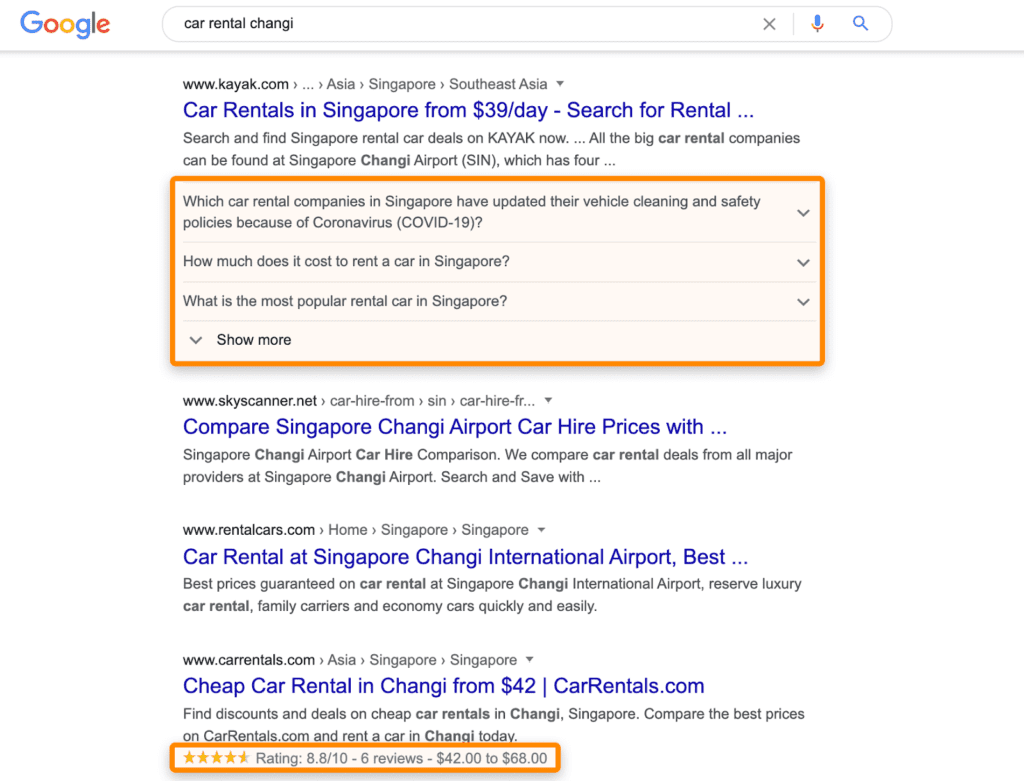
7. Maintain your online stock levels
Searches for ‘in stock’ items have increased exponentially. So there is a competitive advantage in focusing your efforts on the products you know you can sell today and quickly.
Out of stock items can not only harm your SEO if not addressed correctly, but they will also affect your paid advertising positions. After all, users can’t shop for a product they don’t have!
8. Utilise automation
Manual PPC bidding is great for maximum control over your ads. However, it is a very inflexible approach when you have varied product demands.
Using automated rules and artificial intelligence-led smart bidding will allow you to keep pace in unstable periods.
Automation can also help you to fill the gaps in your SEO and PPC strategy via real-time market insights.
9. Use each channel to plug data gaps
The beauty of SEO and PPC integration is that where one falls short, the other can often provide insight. For example, not provided keywords often leave SEO teams unable to report on which terms brought a user to a site organically. However, by using the ‘Search Query Reports’ in Google Ads they can identify what keywords to prioritise when generating content aimed at specific target audiences. This is especially valuable when writing product descriptions or brand pages for eCommerce sites.
Likewise, make sure that you review organic traffic trends and Search Console Data when planning your PPC spend. For example, if there is a peak in organic traffic at the weekend, then ensure your PPC spend reflects this too. Reviewing Google Search Console to see what queries your pages are already being found for is also a good opportunity to find keywords for PPC bidding.
What’s more, if your PPC bids are relevant to your SEO landing page content there are multiple benefits. This includes a better quality score, improved ad rank, reduced cost per click as well as upped conversions and engagement rates with more relevant content. All around, a win-win!
Summary
There are a multitude of benefits for SEO and PPC eCommerce integration, the main being an awesome boost to your results. Ultimately, the main thing to keep in mind is your end customer and how to consistently engage them through your advertising, landing pages and PR campaigns. Pay close attention to your metrics, and be flexible with your approach to ensure you’re using each selling tool to its strengths. And remember, SEO and PPC should be close friends, not strangers!
Here at Tillison, we provide a range of eCommerce Marketing services such as WooCommerce, Shopify SEO and CRO for eCommerce.
How have you aligned SEO and PPC? Let us know in the comments section below.

